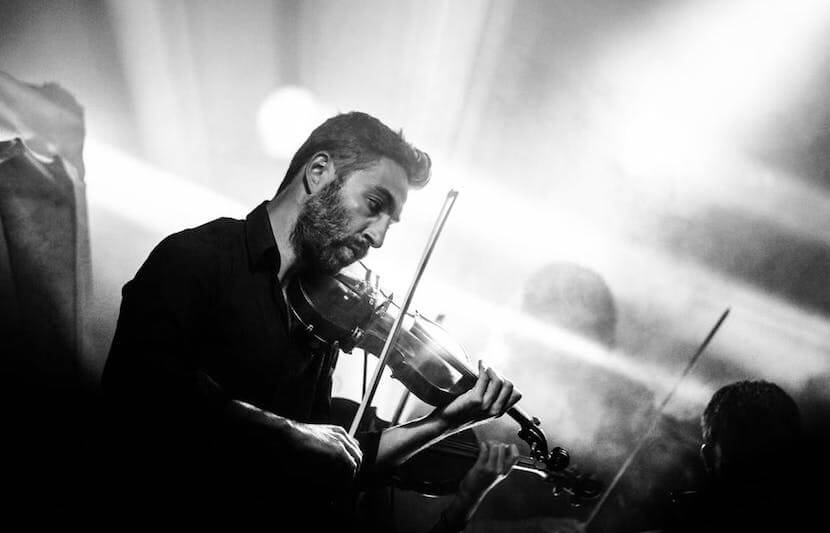Music has the immense power to transform and manipulate emotion. A happy song can momentarily lift people out of feeling lonely or depressed, and a sad song can make even the happiest of people experience a moment of sorrow or isolation.
A recent study has shed light on the emotional powers of a solo.
Researchers at Ohio State University (OSU) have proved that orchestral pieces that are considered to have sad qualities are twice as likely to feature solos.
“I would argue that a study like this one can help convince us that music sometimes serves the purpose of helping us express and deal with the emotions that we undergo,” said Niels Chr. Hansen, a postdoctoral research fellow at OSU’s Cognitive and Systematic Musicology Laboratory and co-author of the study.
Musicians and composers know music’s emotional powers, and have been using techniques to shape our emotions for thousands of years.
“Composers clearly capitalize on the emotional potential of music, and research like this helps us understand the underlying mechanisms,” said Hansen.
The study
Hansen and study co-author David Huron, Arts and Humanities Distinguished Professor at OSU, focused on 11 instruments featured in orchestral pieces.
The researchers randomly selected 330 excerpts and characterized them as solos or non-solos.
Then they analyzed the excerpts based on the use of seven musical factors that can distinguish sad from happy music — the mode, tempo, articulation, dynamics, rhythmic smoothness, relative pitch height, and relative pitch range.
“Specifically, sad music tends to employ slower tempo, lower overall pitch, more quiet dynamics, narrow pitch range, and smoother rhythms,” said Hansen.
They found that the excerpts deemed sad or relaxed were 74 percent likely to feature a solo, while only 37 percent of happy excerpts likely include a solo.
As a follow-up, the researchers also wanted to determine if the seven factors could solely be used to determine the likelihood of a solo.
When evaluated all at one time, it was an efficient method.
However, when separated, only the articulation and dynamics could be used to accurately predict a solo.
“Composers make creative choices about their pieces based on a wide variety of factors, but one of the possible reasons for solos may be that they convey feelings of isolation, loneliness or vulnerability,” Hansen said in a statement.
A paper describing the study is published in the journal Music Perception.
Solos convey emotion
The use of solos to shape emotion is not specific to orchestral music. Artists in many genres often use solos to convey their feelings to the audience.
“Although I do not think that solo music is generally more ‘emotional’ than non-solo music, solos do seem particularly useful for expressing specific emotional qualities like isolation, loneliness, weakness, or vulnerability,” said Hansen.
Musicians seem to use solos to create a dialogue with the audience. They make the music more personal, thus serving as a platform for audience members to feel as if they understand the emotions of the soloist.
Hansen has a theory for why solos are effective in expressing loneliness and vulnerability.
“The sound of a single instrument might remind us of situations in our own lives where we have been lonely or sad and therefore may have isolated ourselves,” said Hansen.
“Some evolutionary psychologists would claim that the isolation that you impose upon yourself when you’re sad serves to make you ruminate and reflect on life-station issues, such that you can change your behavior for the better to avoid things that make you sad in the future.”
Hansen claims that sadness is often conveyed through a personal low-arousal state of grief and self-reflection.
A high-arousal state of grief, in which someone may be loudly crying to attract the attention of others who may be able to help, is “very different from sadness,” said Hansen.
“A single instrument will also require less energy overall and produce quieter sounds that are more similar to the features of sad speech and sad music.”
In contrast, Hansen notes that some musicians have proposed that solos can be used to show a musician’s degree of skill, thus suggesting that they can portray individualism, courage or heroism.
“Solo instrumentation are also sometimes simply used to create contrast and variety. If music is loud and dense all the time, then this technique loses its effect,” said Hansen.
What’s next?
There are many possibilities for what happens next.
Hansen is thinking about conducting an experiment where the researchers change the instrumentation of a song to see whether that changes people’s perceptions of the intended emotion of the music.
“For example, would you be more likely to find the music sad if I played a solo version of a given song rather than the original version?,” said Hansen.
The researchers are currently working on a project that evaluates offstage instrumentation — when classical or film composers have a musician play from offstage to create the feeling and sound of distance.
“We are interested in knowing whether this imitation of physical distance may be especially appropriate for conveying sadness,” said Hansen.
Lastly, the researchers want to know more about how solos are used in different genres. They expect interesting similarities and many differences in how solos are used in orchestral music compared to pop, rock and more.
“Given that music has such a tremendous impact on our emotions, the study of emotions has always been and will always be at the very core of music research,” said Hansen.



